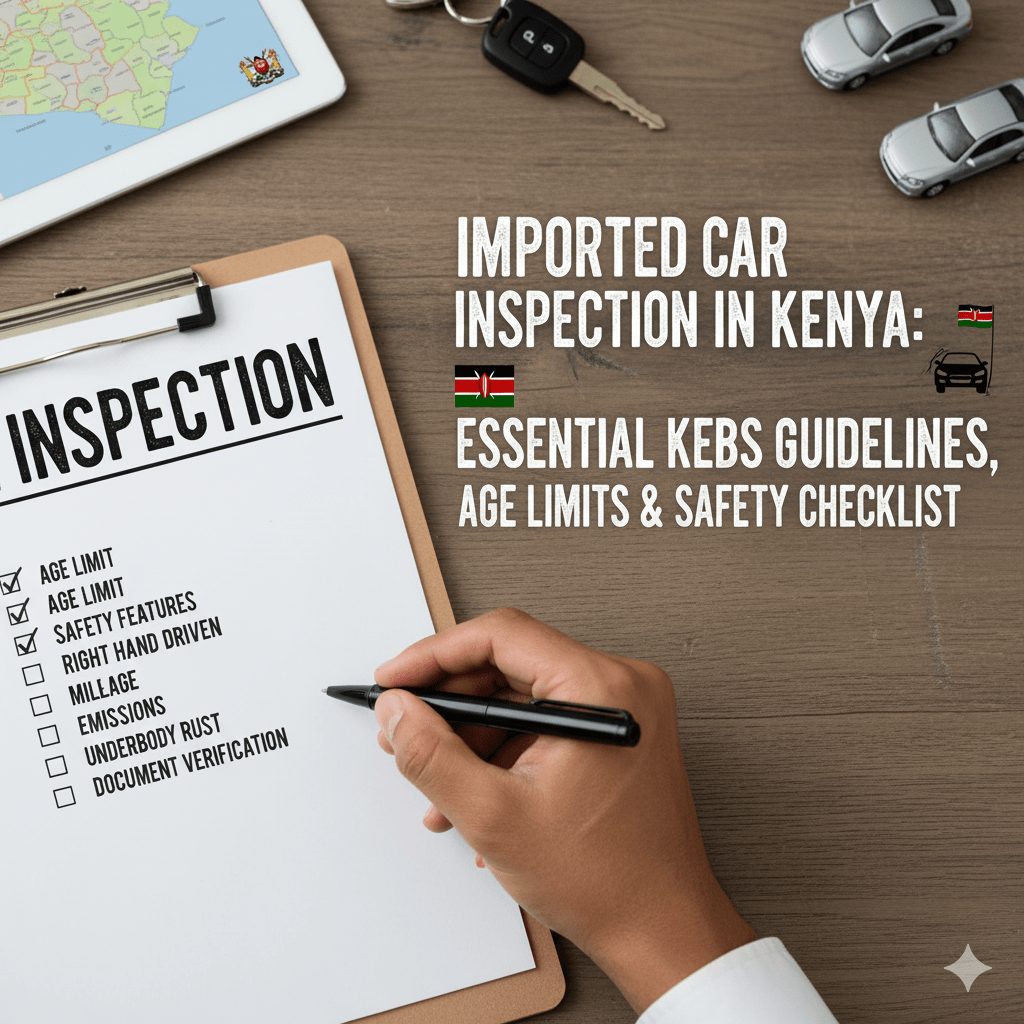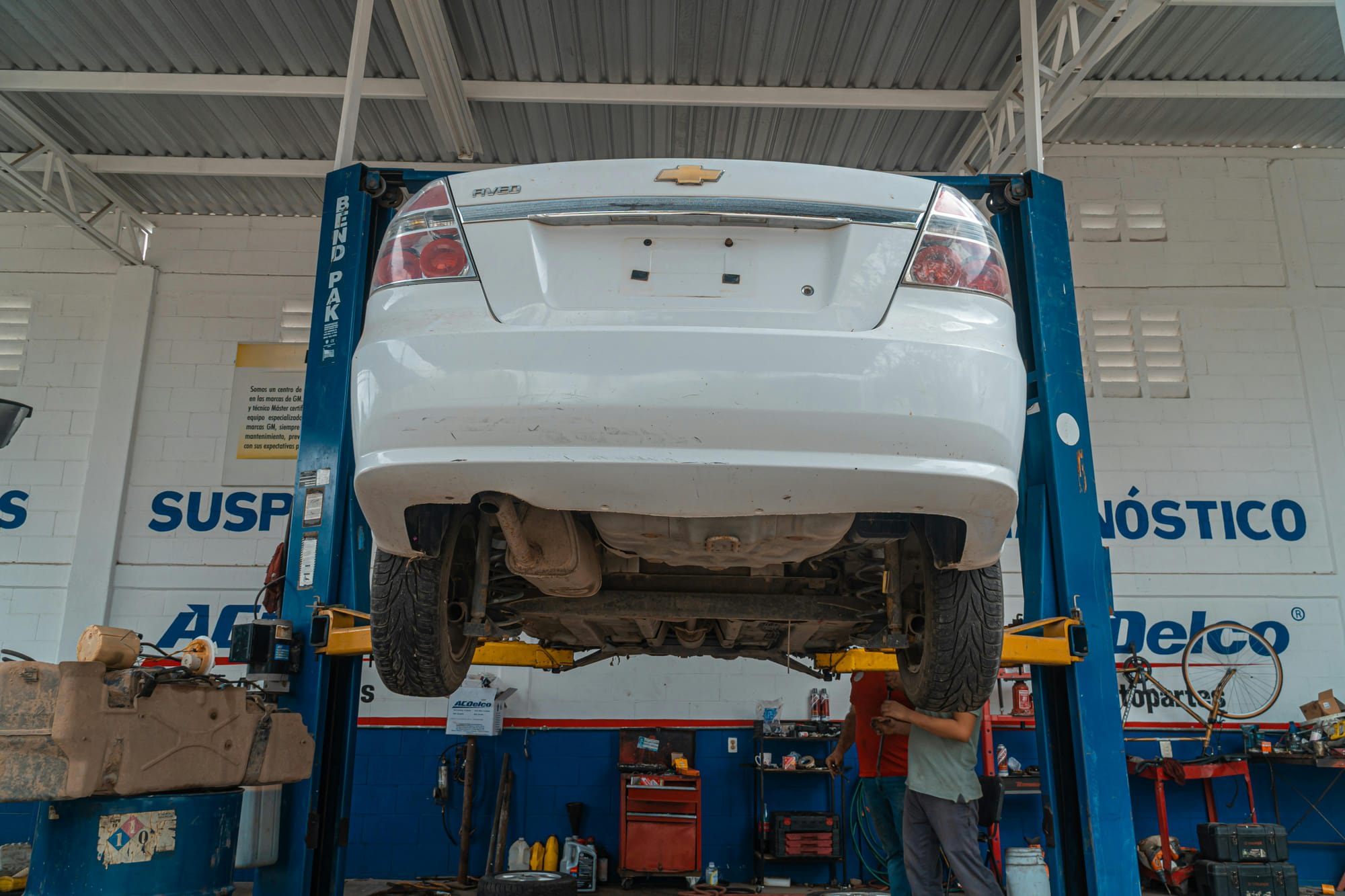Imported Car Inspection in Kenya: Essential KEBS Guidelines, Age Limits & Safety Checklist

Every year, thousands of Kenyans import cars from Japan, the UK, and other markets. But before your dream car hits the road, it must pass inspection to ensure it meets the safety, environmental, and road-worthiness standards set by the Kenya Bureau of Standards (KEBS).
Here is a detailed guide on the essential KEBS guidelines, age limits, and safety checks you should be aware of when importing a car to Kenya.
1. Who Oversees Car Inspections?
Car inspections are carried out by KEBS, either directly or through appointed inspection agents in the country of export. In Japan, for example, Quality Inspection Services Japan (QISJ) and other KEBS-approved agencies handle this process before shipment.
At the Kenyan port of entry (Mombasa), KEBS verifies the inspection certificate and can reinspect if required.
2. Age Limit of Imported Cars
Kenya only allows importation of vehicles that are 8 years old or less from the year of manufacture.
- Example: In 2025, the oldest car you can import must be manufactured in 2017.
Anything older is automatically disqualified and cannot be registered in Kenya.
3. Right-Hand Drive Requirement
All imported vehicles must be right-hand drive (RHD). Left-hand drive (LHD) cars are restricted, with exceptions only for specialised vehicles, such as fire trucks, ambulances, and construction equipment, subject to government approval.
4. Roadworthiness and Safety Checks

Inspectors assess whether your car is safe for Kenyan roads by checking:
- Brakes and steering performance
- Suspension and tyre condition
- Seatbelts and airbags functionality
- Lights, wipers, and mirrors compliance
Any serious defects must be corrected before shipment.
5. Emission Standards
Imported cars must comply with Euro 4 emission standards. Vehicles with faulty exhaust systems or removed/tampered catalytic converters will fail inspection.
6. Odometer Verification (Mileage Check)
To protect buyers from fraud, inspectors confirm the mileage is genuine. Odometer tampering (clocking back) results in an automatic fail.
7. Structural Integrity
Cars are checked for:
- Signs of significant accident damage
- Chassis or frame repairs
- Severe rust or corrosion
Unsafe structures lead to failed inspections and rejection at the port.
8. Radiation and Environmental Safety
For cars imported from Japan, radiation tests are carried out due to the Fukushima nuclear incident (2011). The car must pass strict radiation safety levels before shipment.
9. Inspection Certificate (COI)
A Certificate of Inspection (COI) is issued once the car passes all checks. This document is mandatory for clearance by KRA and registration with NTSA. Without it, you’ll face penalties, delays, or outright rejection.
10. What Happens If the Car Fails Inspection?
- At the country of export: You must repair the defects (e.g., replace tyres, service brakes) and repeat the inspection.
- At the Kenyan port: KEBS can reinspect. If it still fails, the car may be re-exported or destroyed at your cost.
Final Word
The imported car inspection in Kenya isn’t just red tape—it is a safeguard to ensure road safety, environmental compliance, and value for money. Always:
- Confirm your car is 8 years old or newer
- Ensure it’s right-hand drive
- Get the KEBS Certificate of Inspection (COI) before shipping
Following these guidelines will save you from costly mistakes, clearance delays, and potential losses.
Remember!
Before making a decision, check your budget. And if you are short on cash, talk to us, we finance up to 60% of your car’s value! Contact us through our contact form, call us on +254791573231 or visit one of our branches across Nairobi, Kiambu, Machakos, and Kajiado counties to explore your financial options.




Comments ()